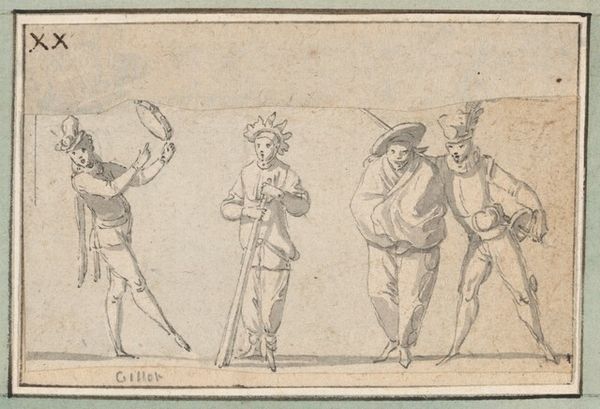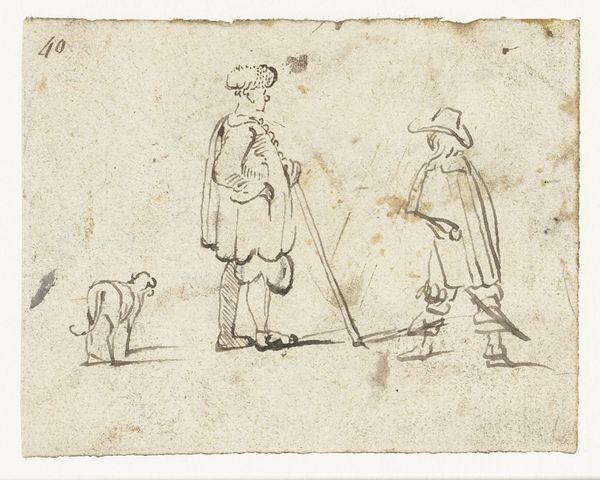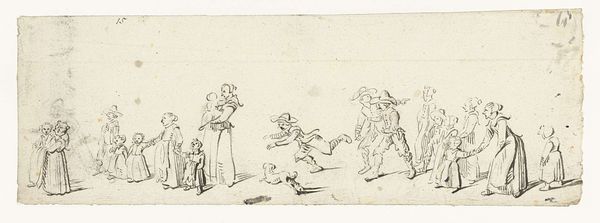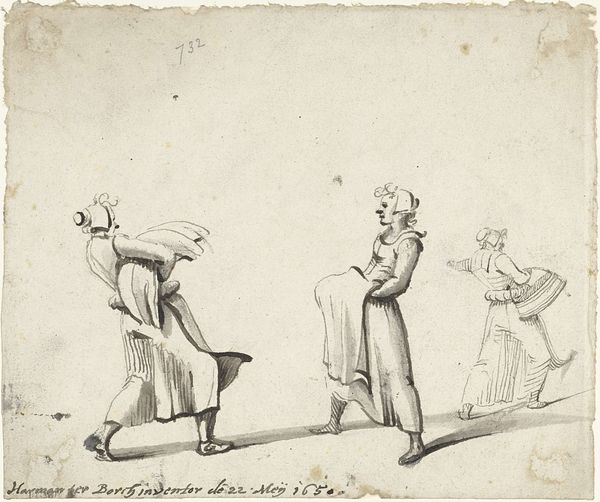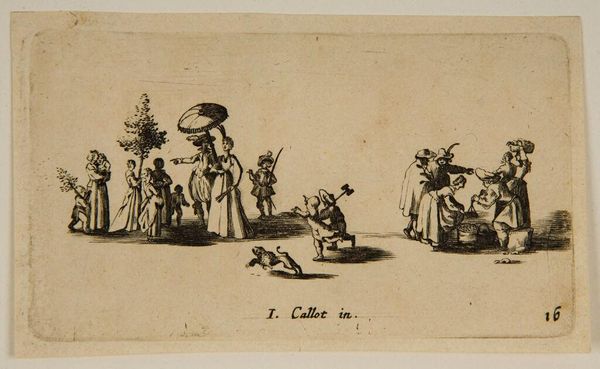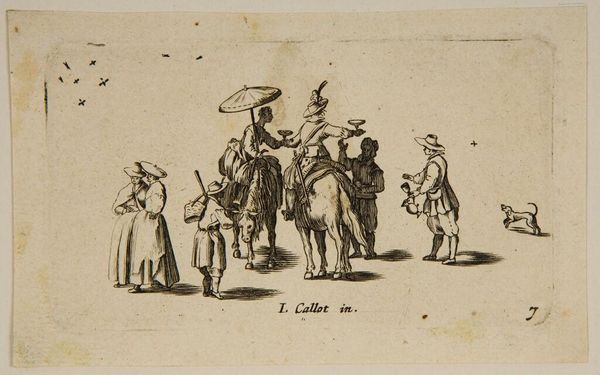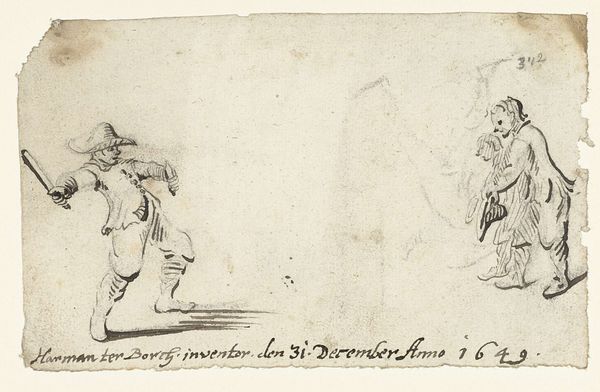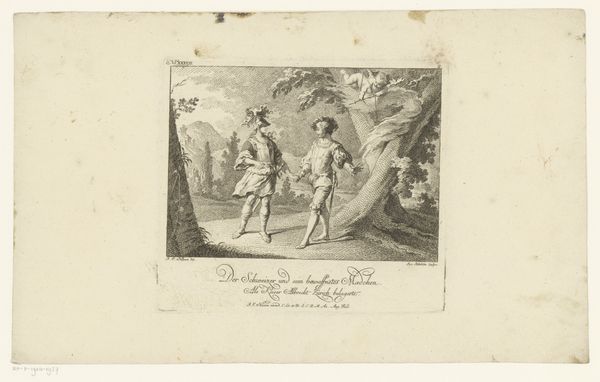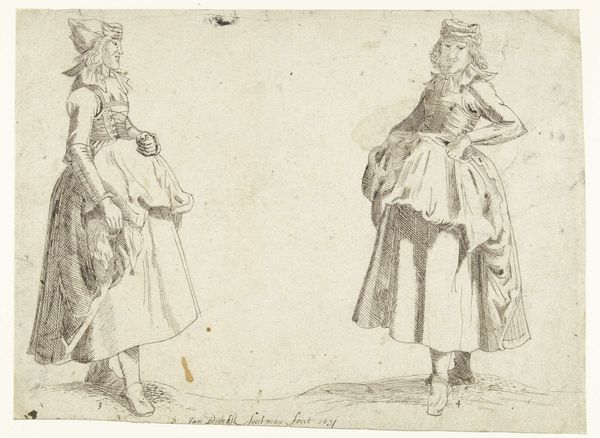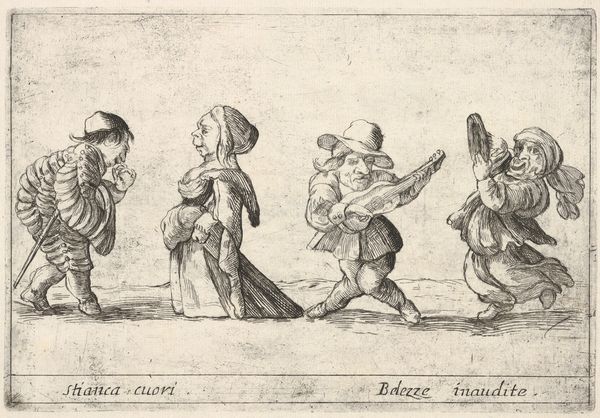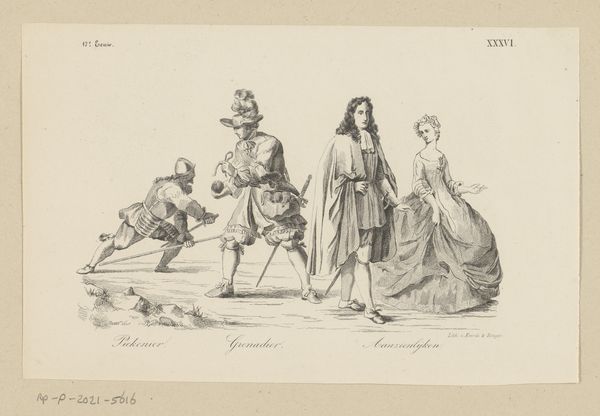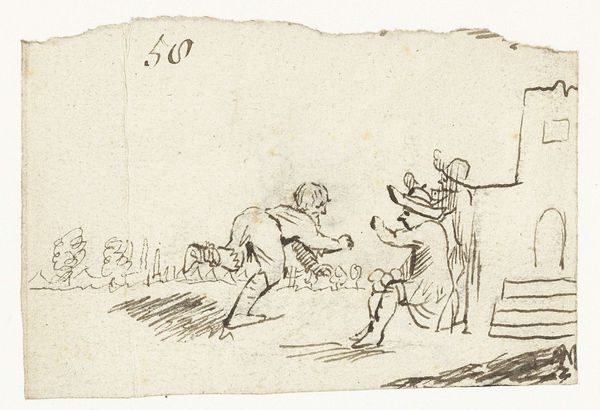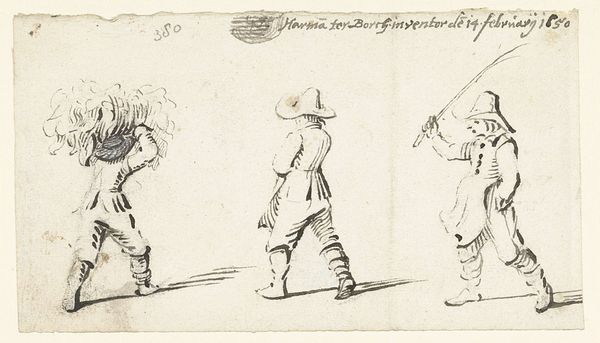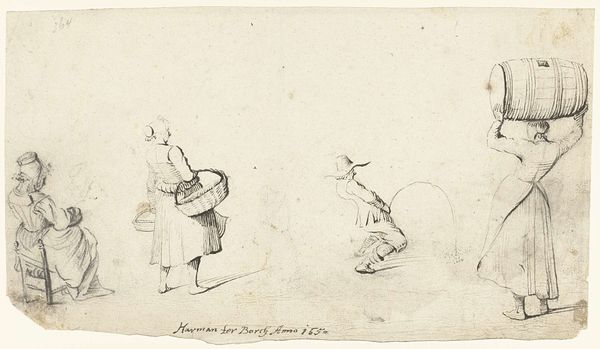
print, etching
#
portrait
#
narrative-art
#
baroque
# print
#
etching
#
figuration
Dimensions: height 149 mm, width 97 mm
Copyright: Rijks Museum: Open Domain
Israel Henriet created this print, "Drie figuurtjes," sometime in the first half of the 17th century. The three figures, standing side by side, are distinguished by their clothes and bearing. But what might such a sketch have been used for at the time? Henriet was based in France. In 17th-century Europe, the clothes people wore were closely tied to their social position. Aristocrats would wear different clothes than merchants, who would dress differently from laborers. Certain colors, fabrics, and styles were restricted by law to specific social classes. Henriet was probably sketching models for use in larger prints, paintings, or even stage productions. The print testifies to the highly codified visual language of class in the early modern period. By using such a print, a historian can dig into the clothing regulations of the period and decipher the semiotics of class in the 1600s. As such, artworks offer a unique window into the social and cultural assumptions of the past.
Comments
No comments
Be the first to comment and join the conversation on the ultimate creative platform.
